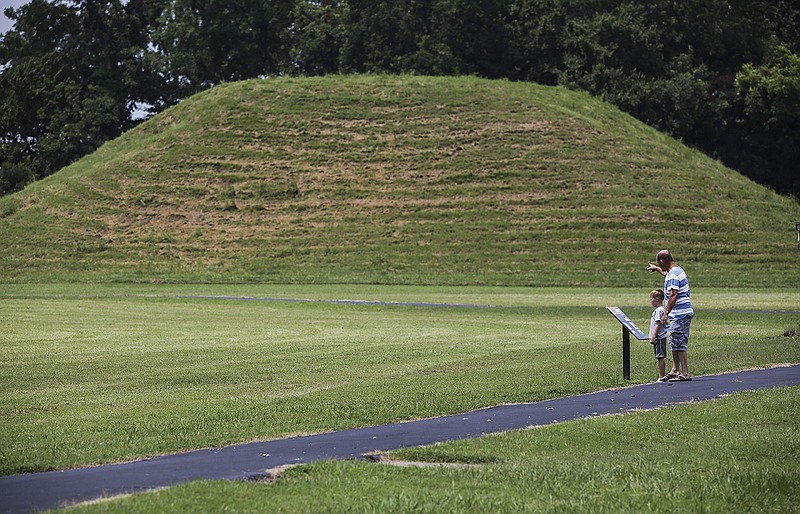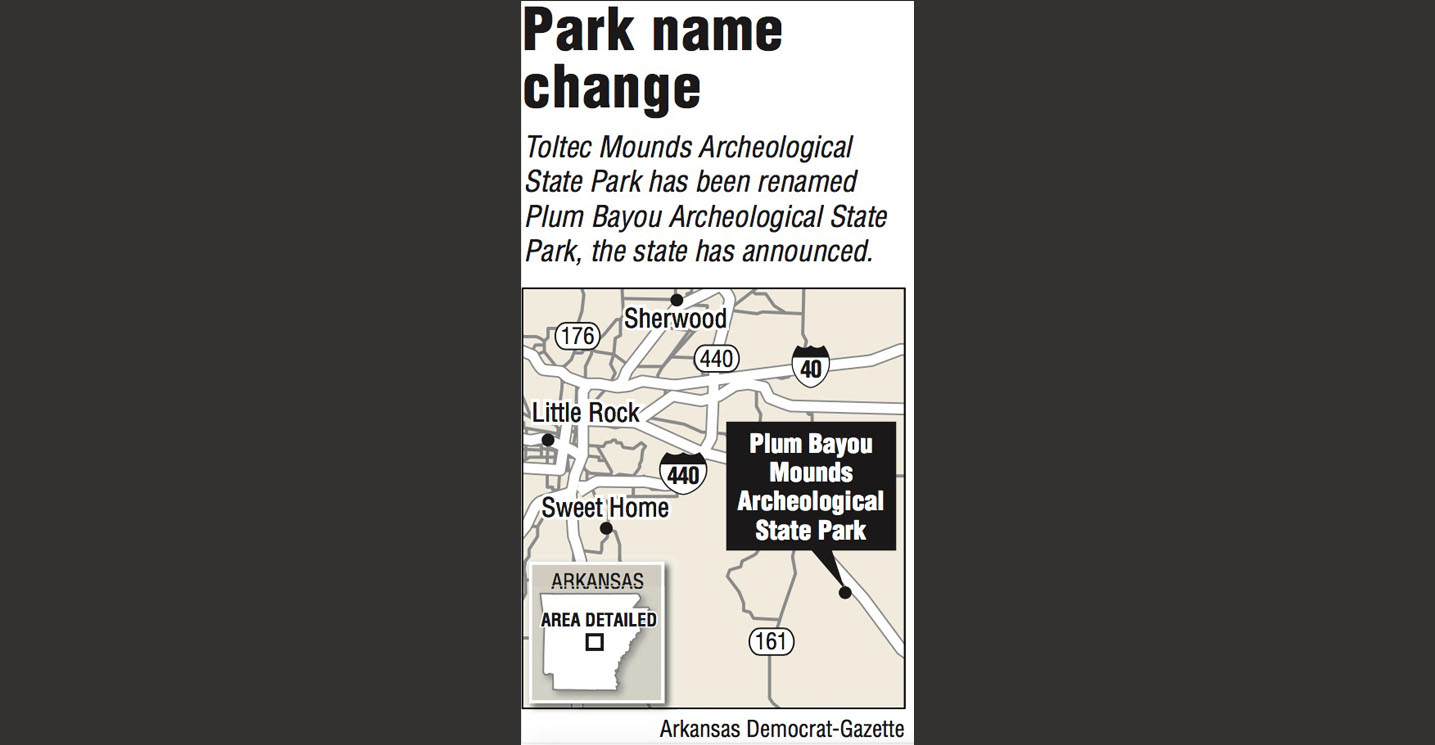Toltec Mounds Archeological State Park has been renamed Plum Bayou Mounds Archeological State Park to more accurately identify the local people who built the mounds more than 1,000 years ago, according to a news release from Arkansas State Parks.
"After consulting with the Arkansas Archeological Survey, representatives of the Quapaw Nation and other stakeholders, Arkansas State Parks and the State Parks, Recreation and Travel Commission decided to rename the park to honor the distinct culture of the Plum Bayou people," Stacy Hurst, secretary of the Arkansas Department of Parks, Heritage and Tourism, said in the release.
A public forum was held by the Arkansas Department of Parks, Heritage and Tourism in April to hear different input before making the name change.
The park consists of 18 earthen mounds constructed by a Native American group living in the Central Arkansas region between A.D. 650 to 1050, according to Arkansas Archeological Survey officials. The group has been named Plum Bayou after the bayou region they lived in.
"They were a late woodlands people," said Paige Ford of the survey Wednesday. "We don't know if they became Mississippian people or if they went off and did something else."
Ford said archaeologists have not been able to connect Plum Bayou people to any modern tribe.
The mounds became known as the "Toltec Mounds," a misnomer that followed the site for more than 200 years.
"In the 1800s we didn't know who built these mounds," Ford said. "We have mounds in the southeast up to Ohio and nobody knew who built them. We had suggestions that giants built mounds and at one point it was almost anybody but Native Americans."
The Knapp family, who owned the land in the late 1800s, believed the mounds were possibly built by the Toltec civilization of Mexico, a release written by Ford says. Mary Eliza Knapp contacted the Smithsonian in 1876 to investigate the site.
"Because of her initial contact, archaeologists from the Peabody Museum of Harvard University as well as with the Bureau of Ethnology (BOE) visited and investigated the site in 1879 and 1882, proving that the mounds were indeed built by the ancestors of local Native Americans and not by Toltecs," according to Ford's release.
After the investigation, the Knapp family created a township and railway station continuing to use the name Toltec, Ford said.
The mounds site previously was known as the Knapp Mound Group but over time locals referred to it as Toltec and when purchased by the state in the 1970s it received the name Toltec Mounds Archeological State Park.
"We have always known the name Toltec to be a misnomer -- a fact that the Parks staff make well known to visitors when they arrive to learn about the site and Plum Bayou culture," Ford said in her release.
The first work naming the local culture as Plum Bayou people was published in the 1960s by Martha Rolingson of the Arkansas Archeological Study.
Ford said the Plum Bayou people used the mounds at the park for celebration. The mounds are enclosed by a ditch and an earthen embankment wall on three sides and an oxbow lake.
Archaeologists have determined one of the mounds was used for burial and one used for feasting, Ford said.
"People weren't living here year round," Ford said. "You may have had religious specialist or political people living here but others would travel here for feasts or celebrations."
The Plum Bayou people were not farmers in the way seen later with the Mississippian people, Ford said.
"They didn't have a lot of domesticated resources but were doing some horticulture and using things native to Arkansas," Ford said.
This includes the use of milkweed, Maypops, Hazelnuts and berries, she said.
"They were using those things for food and some fiber plants for baskets and clothes," Ford said. "They were hunters as well -- hunting different local animals such as white tail deer and turkeys."
Plum Bayou sites have been documented in Central Arkansas, including Lonoke and Pulaski Counties, she said.
It is believed the people could have interacted with other cultures in Oklahoma and near the Mississippi River.
There's some evidence that Plum Bayou people traveled to or traded with people living in the Ouachita Mountains region because of specific quartz and stone found in tools, Ford said.


